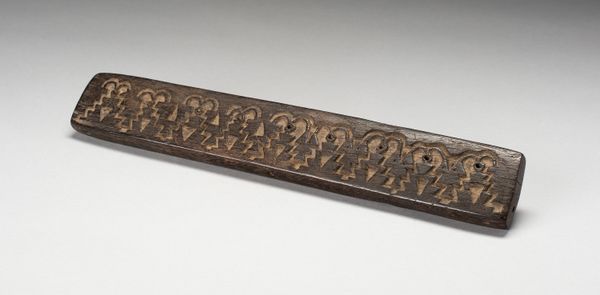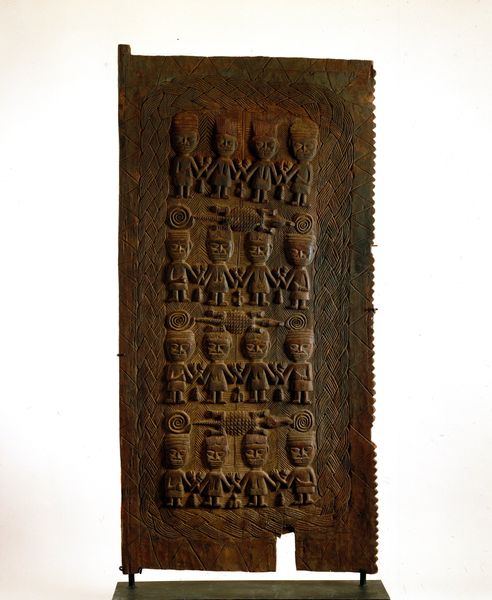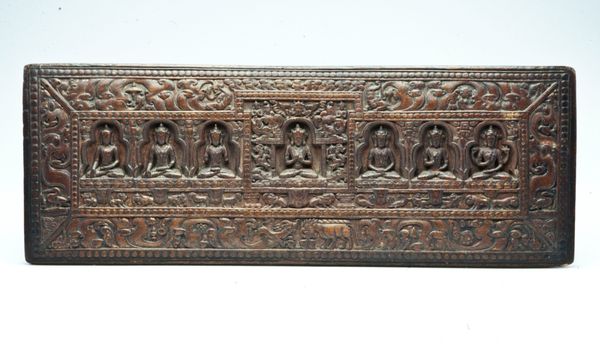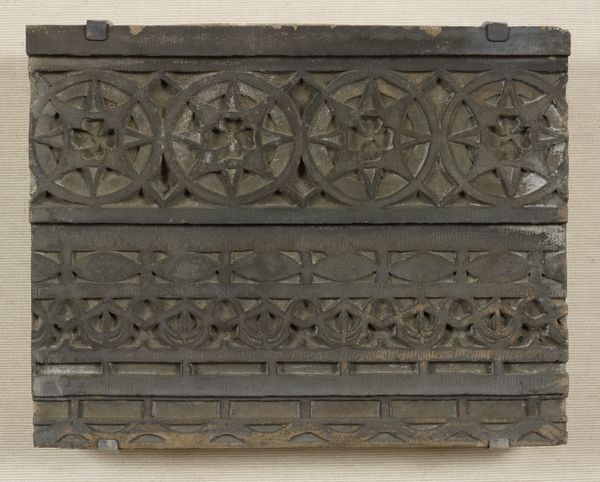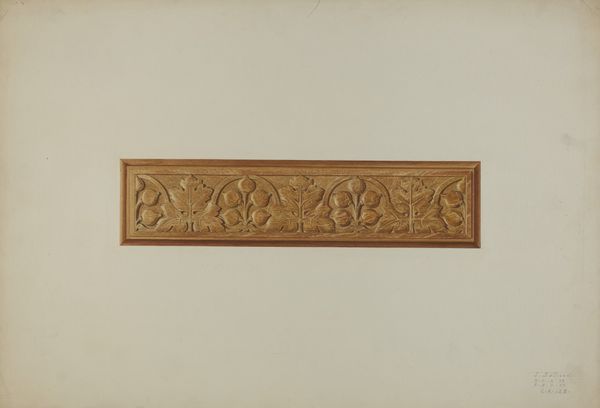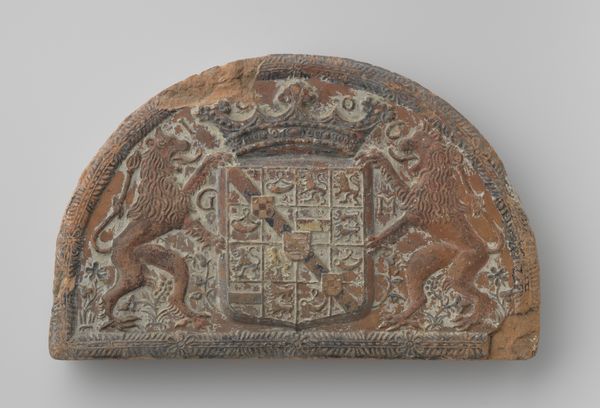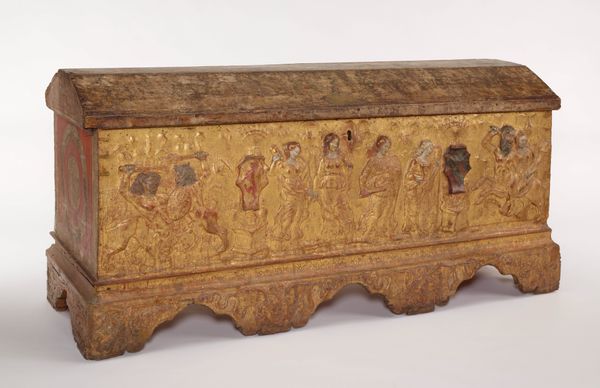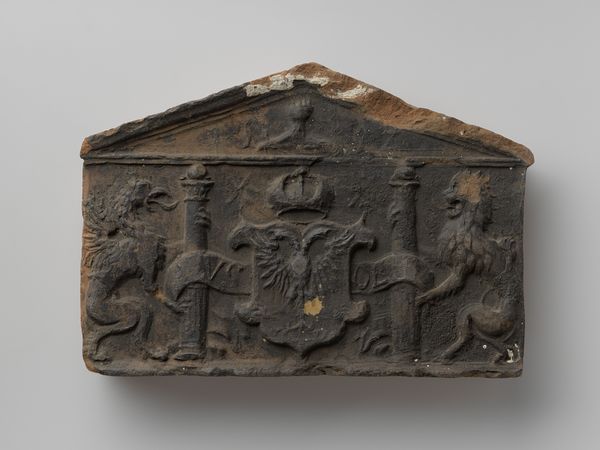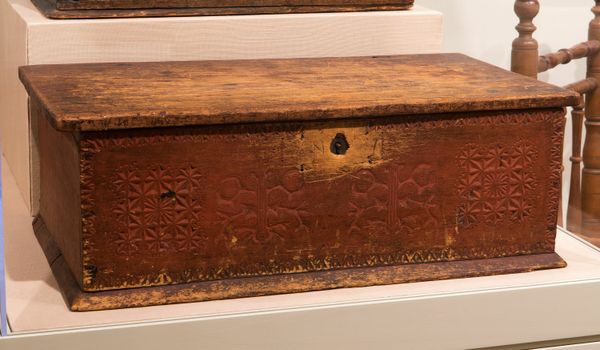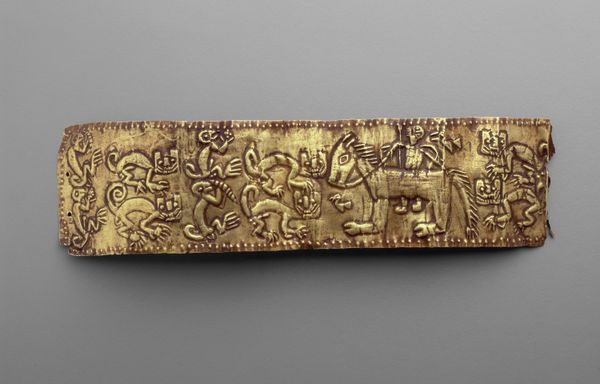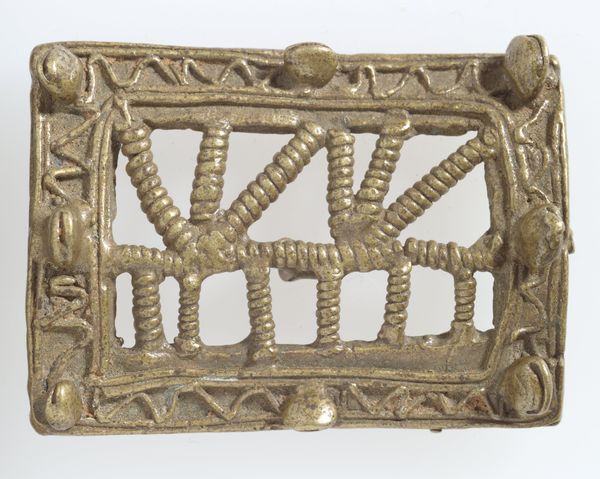
Fragment of an architectural molding Marinid dynasty (1244–1465), 14th century
0:00
0:00
carving, relief, wood
#
wood texture
#
medieval
#
carving
#
asian-art
#
relief
#
wood
#
islamic-art
#
decorative-art
Dimensions: 19.2 × 156.3 × 4.4 cm (7 9/16 × 61 1/2 × 1 11/16 in.)
Copyright: Public Domain
Editor: This wooden fragment, a molding from the Marinid dynasty, likely the 14th century, presents a really intriguing contrast between geometric and organic patterns. There’s something about its age and condition that also makes it feel incredibly precious. How do you read this piece as a historian? Curator: The power of this piece lies, in part, in understanding its original architectural context. Marinid art, especially in architecture, served a distinct socio-political function. This molding wasn't just decoration; it was a statement of power, legitimacy and sophisticated artistry. Editor: A statement of power? Could you elaborate on that? Curator: Absolutely. Think about where this molding might have been placed – perhaps in a mosque, a royal palace, or even a school. Architectural elements like this projected the Marinid dynasty’s wealth, influence, and their role as patrons of culture and religion. The careful carvings demonstrated wealth to the public through investment into highly skilled laborers. The placement of the molding and accessibility also factored into understanding its intended reach to certain viewers. Editor: So, its location would dictate who experienced this art? Curator: Exactly! The accessibility and visibility of these details reinforced social hierarchies and power dynamics. Who had access to this kind of artistic expression reveals much about Marinid society. Consider the politics of imagery; Islamic art, while often avoiding figural representation in religious contexts, utilized complex geometric and vegetal patterns. Editor: It's interesting how an object seemingly just decorative becomes an emblem of political control and societal values. I hadn’t considered that. Curator: Precisely. Art always functions within these structures of power and influence. Looking closely reminds us of how visual culture participates in societal negotiations. Editor: Thank you; I hadn't truly grasped that relationship previously, which gives a new angle to its reading. Curator: Understanding such links enhances our understanding of a range of aesthetic cultures in the modern and historic worlds.
Comments
No comments
Be the first to comment and join the conversation on the ultimate creative platform.

